Where Does Coffee Beans Come From?
Where Do Coffee Beans Come From? Ever wondered about the origin of the coffee beans that make up your morning brew?? It's quite the global journey that starts far away in the lush landscapes along the coffee belt. This belt isn't a fancy accessory but rather a band around the Earth, lying between the Tropics of Cancer and Capricorn. It's here that coffee plants thrive, thanks to the perfect blend of sunshine, rain, and temperature.
The Global Journey of Coffee
Who invented coffee, you might ask? While not invented in the traditional sense, coffee's discovery is attributed to a goat herder named Kaldi in Ethiopia, marking where did coffee originate. The global journey of coffee beans starts in over 70 countries showcasing the vast sources of caffeine in nature, with Brazil, Vietnam, and Colombia leading the pack. These beans, which are actually seeds from coffee grains, embark on a worldwide voyage to end up in your cup. Each coffee plant can produce thousands of coffee beans, but it takes about a year for a new plant to start bearing fruit. Imagine the patience needed!
Understanding the Coffee Belt
- Exploring the coffee belt helps us understand not just where does coffee come from but also the diversity of coffee. Arabica Beans and Robusta Beans, the two main varieties, differ in flavor, growing conditions, and caffeine content, enriching our understanding of what are coffee beans.
- Arabica beans, known for their sweet and soft taste, hail from the highlands of Ethiopia and Sudan. Meanwhile, Robusta beans, which pack a punch with their stronger and more bitter flavor, are often found in the heart of Western and Central Africa, Southeast Asia, and Brazil.
- Coffee plants need the stable temperatures, abundant rainfall, and canopy protection of higher altitudes. These conditions are crucial because they help the coffee berries (and thus the beans inside) to grow slowly, enhancing their flavor profile.
Coffee Belt
- From the moment coffee seeds are planted, growers meticulously nurture them, ensuring they blossom into the coffee bean trees whose fruits will one day become the coffee we cherish.
- Coffee's journey across the world is not just about How to Make Instant Coffee made its way from Ethiopia to your mug; it's about the cultural impact and how where did drinking coffee originate influenced global consumption patterns.
- So, the next time you sip your morning brew, remember the global journey these beans have taken. From the coffee belt to your cup, it's a world-spanning adventure that makes every sip a testament to the incredible journey of coffee.
The Coffee Plant
Exploring Where Does Coffee beans come from leads us to the coffee belt, home to both Arabica and Robusta beans. It all begins with the coffee plant, This plant is more than just a crop; it's the very start of the coffee journey. Let's take a closer look at what makes this plant so special.
Anatomy of a Coffee Plant
This important process, from seed to cup, brings us back to the fundamental question: where does coffee come from? The answer lies in the heart of the coffee belt, where these remarkable plants flourish.A coffee plant is green, leafy bush that loves the shade. It has branches filled with dark green, glossy leaves that are a bit like the laurel leaves in shape. The magic starts when the plant flowers: it blooms with small, white, fragrant flowers. After the flowers, the coffee berries appear. These berries are the treasure chests, holding the precious coffee beans inside.
Now that you know where your coffee beans come from, you might be wondering about the best way to enjoy them. Discover the differences and find your favorite in our 'instant coffee vs ground coffee' guide.
A single coffee plant can live up to 100 years, but it's most productive between the ages of 7 to 20 years. They prefer the cozy warmth of the tropics, where the sun and rain play tag all year round. It's this unique setting that gives us the coffee seeds needed to produce the cups of coffee we enjoy every day.
Varieties: Arabica and Robusta
Now, let's talk about the two main types of coffee: Arabica and Robusta.
|
Feature |
Arabica |
Robusta |
|---|---|---|
|
Origin |
Thought to be the first type of coffee bean discovered, with origins in Ethiopia. |
Originates from sub-Saharan Africa, known for its ability to thrive in various environments. |
|
Flavor Profile |
Arabica beans have smooth, complex flavor profiles, often featuring hints of fruit and sugar, with higher acidity. |
Robusta beans have a stronger, harsher taste, with a grain-like overtone and peanutty aftertaste. |
|
Caffeine Content |
Generally, contains less caffeine. |
Higher caffeine content, which contributes to its bitter flavor. |
|
Growing Conditions |
prefer higher altitudes, cooler temperatures, and volcanic soil, making regions like Latin America, Eastern Africa, Asia, and Arabia ideal for growing coffee beans. |
Robusta plants are hardier, capable of growing at lower altitudes and warmer climates. They are commonly grown in Western and Central Africa, Southeast Asia, and Brazil. |
|
Usage |
Due to its superior flavor, Arabica is often used in specialty and high-quality coffee products. |
Often used in espresso blends for its strong flavor and crema production. Also common in Instant Coffee and as a filler in "lower grade" coffee blends. |
Historical Origins of Coffee
Exploring where coffee beans come from opens up an interesting story. Coffee beans grow best in certain places like the high mountains of Ethiopia for Arabica beans, or the flat lands of Vietnam for Robusta beans. They need just the right type of soil, height above sea level, and weather to grow. The history of coffee starts with who first found it and how this drink, that wakes us up, moved from old civilizations to be loved all over the world today. It's a journey that begins with the birthplace of coffee, making each cup of coffee we enjoy full of fascinating tales.
The Discovery of Coffee
Legend has it that coffee was discovered by a goat herder named Kaldi in Ethiopia. One day, Kaldi noticed his goats frolicking and full of energy after eating the red coffee berries from a certain coffee plant. Curious, Kaldi tried the berries himself and felt a similar lively boost.
Kaldi shared his discovery with a local monk, who concocted a drink from the berries that kept him awake during long meditations. This was the humble beginning of coffee as we know it. From these ancient Ethiopian highlands, where coffee beans come from initially, the knowledge of coffee spread to the Arabian Peninsula, where it began its journey across the world.
Coffee's Journey Across the World
- From Ethiopia to Arabia: The journey begins in Ethiopia, where the energizing effects of coffee berries were first discovered. Coffee then made its way to the Arabian Peninsula, becoming a beloved ritual in places like Yemen. q
- Spreading Through the Middle East: In the Middle East, particularly in Istanbul, coffee became a staple in the social scene, with the first coffee houses, or "qahveh khaneh," popping up, places where people gathered to drink coffee, chat, and share news.
- Arrival in Europe: Coffee reached Venice in the 17th century through trade, quickly spreading across Europe despite initial skepticism. It wasn't long before coffee houses became the hubs of intellectual and social interaction in major cities like London, Paris, and Vienna.
- Coffee Goes Global: European colonization efforts brought coffee cultivation to new lands, including Latin America, Southeast Asia, and the Caribbean. This expansion helped establish coffee as a global commodity. Where coffee beans are grown expanded, making coffee a truly global commodity.
- The Birth of Coffee Plantations: In these new regions, vast plantations were established to grow the Whole Bean Coffee, significantly increasing the world's coffee supply and making it accessible to a broader audience.
- Cultural Impact: As coffee spread across the globe, it influenced various aspects of society, including the economy, politics, and the arts. Coffee houses became centers for intellectual debate, business transactions, and artistic expression.
- Modern Day: Today, coffee is a global phenomenon, with its cultivation spread across the coffee belt. It continues to be a vital part of daily life for millions, celebrated for its rich history and its role in community and culture.\
Coffee Cultivation Process
How is coffee made? The process from coffee beans on the plant to your cup involves careful cultivation, harvesting, and roasting. As we delve into how to make coffee from beans, it's clear the process is both an art and a science. From selecting the right beans coffee for planting to mastering the roast, every step is vital in crafting the perfect cup.
Each coffee plant, a fascinating source of coffee beans for planting, can produce thousands of beans crucial for making the coffee we enjoys:
From Seed to Plant
- Starting with the Seed: The first step in growing coffee is choosing the right coffee seeds. These are usually coffee beans that have been specially selected for planting.
- Nursery Care: The seeds are planted in nurseries first. Here, they're kept under shade and watered regularly until they sprout into seedlings. It's a bit like a baby's first steps, but for coffee!
- Moving Outdoors: Once they're strong enough, the young coffee plants are moved to their permanent home in the coffee fields. They need plenty of room to spread their roots and grow.
- Patience is Key: It takes about 3 to 4 years for a coffee plant to start producing coffee berries. That's a long wait, but good things come to those who wait, right?
The Importance of Climate and Soil
- Just Right Climate: Coffee plants love the climate in the coffee belt — not too hot, not too cold, and just the right amount of rain. This belt wraps around the Earth, near the equator, offering the perfect weather conditions.
- Soil Matters: Good soil is like a comfy bed for coffee plants. It needs to be rich and fertile, with good drainage. The roots of the coffee plant don't like to be waterlogged, so they need soil that holds moisture but drains well.
- Altitude Affects Flavor: The best coffee often comes from higher altitudes, where cooler temperatures slow the growth of the coffee berries, giving them more time to develop their flavor. Whether it's the Arabica beans grown in the Ethiopian highlands or the Robusta beans from the lower lands, altitude plays a big part in the taste of your coffee.
Growing coffee is no easy task. It requires understanding the needs of the coffee plant, from the right coffee seeds to the perfect conditions of climate and soil. Each step in the process, from seed to plant, is crucial in bringing us the coffee we love.
The Processing of Coffee
After the coffee berries are harvested, they undergo a crucial phase known as processing. This step is all about getting to the coffee beans inside the berries and preparing them for roasting. There are mainly two methods to do this: wet processing and dry processing.
Wet vs. Dry Processing
|
Processing Type |
Description |
|
Wet Processing |
In wet processing, the coffee berries are first soaked in water. This method helps to remove the outer fruit layer, leaving just the bean. It's a bit like peeling an apple before you eat it. This method is praised for producing coffee beans with a cleaner, more refined flavor. |
|
Dry Processing |
Dry processing is more like sunbathing. The coffee berries are spread out in the sun to dry naturally. Once they're dry, the outer fruit layer becomes easy to remove. Coffee beans processed this way often have a richer, more robust flavor. |
Roasting: Bringing Out the Flavor
Roasting is where the magic happens, turning green coffee beans into the aromatic, flavorful beans we grind for our coffee. This process is all about applying heat to the coffee beans, which develops their flavor, aroma, and color. Think of it as baking cookies; just as the heat transforms dough into delicious cookies, roasting transforms coffee beans into the flavorful beans we love.
- Light Roast: Just a quick touch of heat, keeping the beans light in color and preserving their original coffee flavors. Perfect for those who appreciate the subtle characteristics of the bean.
- Medium Roast: A bit longer in the roaster, giving the beans a richer flavor and a slightly darker color. This is your go-to for a balanced coffee experience.
- Dark Roast: These beans spend the most time in the heat, emerging dark and shiny. This roast brings out a bold, robust flavor that's perfect for those who like their coffee with a strong character.
The roasting process is crucial in defining the taste of your coffee. Whether you prefer a light, medium, or dark roast, it's all about finding the right balance that suits your palate.
Innovations in Coffee Production
Coffee is getting a high-tech makeover, from the fields where it grows all the way to how it's made into the drink we love. Here's what's happening:
Technology in Coffee Farming and Processing
- Drones and Apps: Farmers are using drones to fly over their coffee plants and check if they're healthy. They also use apps to predict the weather, so they know the best time to pick the coffee berries.
- Smart Machines: When it's time to get the beans ready, there are now smart machines that sort the beans by size and color better than before. This means the coffee you drink is more likely to taste great every time.
- Saving Water: Making coffee usually needs a lot of water, but now there are new ways to use less water to process coffee beans, which is great for the planet.
The Future of Coffee Cultivation
- Climate-Change Fighters: Scientists are working on creating coffee plants that can handle different weather better, so we won't run out of coffee even as the world's climate changes.
- Growing Coffee in New Places: Some may wonder, can you grow coffee in the UK? While traditionally challenging due to the climate, innovations in greenhouse cultivation are making growing coffee in UK a possibility for enthusiasts exploring how to make coffee from beans at home. Imagine being able to grow coffee in cooler places where it couldn't grow before. This could mean more coffee from different parts of the world, maybe even the UK!
- Being Green: There's a big push to make coffee more eco-friendly. This includes using less water and finding ways to reuse the leftovers from coffee production.
The future of coffee looks exciting! With all these cool technologies and efforts to make coffee growing greener, we're looking at a world where our morning cup is not just tastier but also kinder to the earth.
Health and Coffee
Coffee isn't just a delicious way to start your day; it also has its share of health benefits and risks. Understanding these can help you enjoy your cup of coffee more mindfully.
The Benefits and Risks
Benefits:
- Boosts Energy Levels: Thanks to caffeine, coffee can help shake off the morning grogginess, making you feel more alert and ready to tackle the day.
- Supports Brain Health: Regular coffee consumption is linked to a lower risk of neurodegenerative diseases, like Alzheimer's and Parkinson's.
- Antioxidants Galore: Coffee is packed with antioxidants, which help protect your cells from damage and contribute to overall health.
- May Lower Some Disease Risks: Drinking coffee has been associated with a reduced risk of certain diseases, including type 2 diabetes and some types of cancer.
Risks:
- Can Cause Jitters and Anxiety: Too much caffeine can lead to feeling jittery, anxious, or even cause heart palpitations.
- May Disrupt Sleep: Drinking coffee late in the day can interfere with your sleep patterns, leading to insomnia for some people.
- Not for Everyone: For individuals with certain health conditions, like high blood pressure or acid reflux, coffee might need to be limited or avoided.
Coffee as a Source of Caffeine
Coffee is one of the most popular sources of caffeine, the world's widely used psychoactive substance. Caffeine works by blocking the action of a neurotransmitter called adenosine, which promotes sleep, thereby increasing alertness and concentration.
- Moderation is Key: While caffeine in coffee can boost your energy and improve mental focus, it's important to consume it in moderation. The recommended maximum amount for most adults is up to 400 mg of caffeine per day – that's about four 8-ounce cups of coffee.
- Varies by Coffee Type: The caffeine content in coffee can vary greatly depending on the type of coffee bean, how it's roasted, and how the coffee is brewed.
Conclusion and Future Outlook
In concluding our exploration of Where Does Coffee beans come from, it's clear that the journey from the coffee plant to your morning cup is an ever-evolving tale of discovery, culture, and innovation
The Ever-Evolving World of Coffee
- Innovation in Coffee Production: The world of coffee is constantly advancing, with new farming techniques, sustainability practices, and brewing technologies emerging. These innovations ensure better quality coffee beans, more efficient processes, and less environmental impact.
- Changing Consumer Preferences: Today's coffee drinkers value not just the taste but also the story behind their coffee. They're interested in where coffee beans come from, how they're grown, and their impact on the environment and communities. This shift towards ethical and sustainable coffee is shaping the future of the industry.
- The Rise of Specialty Coffee: Specialty coffees, with their unique flavors and high-quality coffee beans, are becoming increasingly popular. These coffees, often sourced from specific regions and known for their distinctive tastes, are elevating the coffee experience for enthusiasts around the globe.
Presto Coffee's Place in the Future
- Leading with Quality and Sustainability: Presto Coffee is poised to be at the forefront of the evolving coffee landscape. Their commitment to sourcing ethically grown beans and roasting for excellence aligns perfectly with the growing demand for high-quality, sustainable coffee.
- Adapting to Consumer Needs: By staying attuned to the changing preferences of coffee drinkers, Presto Coffee is well-equipped to innovate and adapt. Whether it's exploring new coffee blends, enhancing roasting techniques, or strengthening direct relationships with farmers, Presto is ready to meet the future head-on.
- A Sustainable Vision: Looking ahead, Presto Coffee aims to continue leading by example, championing sustainability, and quality in every cup. Their vision for the future involves not just serving great coffee, but also making a positive impact on the global coffee community and the planet.
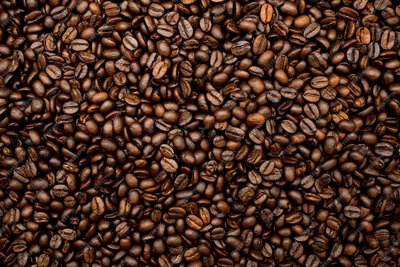
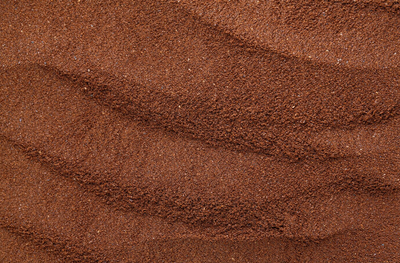
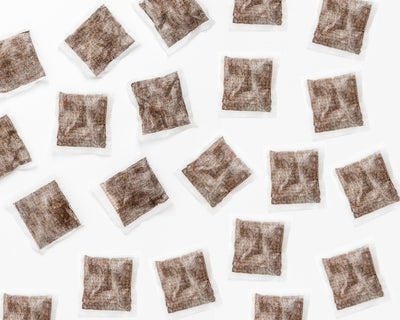
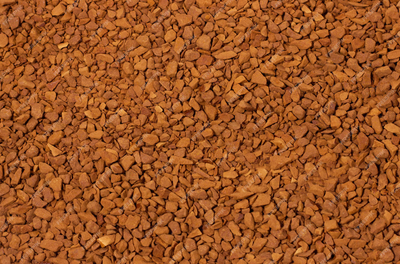

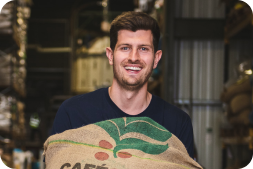
 Log in
Log in


